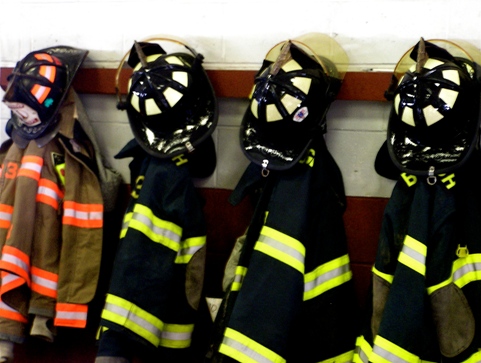By David DeStefano
 Virtually every fire department in the nation understands the importance of establishing and maintaining a rapid intervention team (RIT) at fires and other high-hazard incidents. There is little question that, if managed properly, this is a proactive step toward firefighter safety. Most fire departments maintain a list of basic equipment to be assembled by the RIT based on the hazards that are most often encountered. However, the most important aspect of establishing and maintaining an effective RIT can’t be required in a policy or on a list; it is the preparedness and mindset of RIT members and how they use their most important piece of equipment, the one under their helmets!
Virtually every fire department in the nation understands the importance of establishing and maintaining a rapid intervention team (RIT) at fires and other high-hazard incidents. There is little question that, if managed properly, this is a proactive step toward firefighter safety. Most fire departments maintain a list of basic equipment to be assembled by the RIT based on the hazards that are most often encountered. However, the most important aspect of establishing and maintaining an effective RIT can’t be required in a policy or on a list; it is the preparedness and mindset of RIT members and how they use their most important piece of equipment, the one under their helmets!
It is essential for any member assigned to the RIT to develop a mindset that supports its operations. This thought process begins prior to the incident and includes the knowledge that the initial RIT team has the primary responsibility for efficiently locating a firefighter in distress. In addition, notifying the incident commander of this firefighter’s location, condition, and needs as well as the initial RIT’s ability to conduct a rescue or provide air and keep the firefighter safe from fire spread until additional resources can be deployed for rescue. Members must face the reality that firefighter rescues are labor intensive operations. If a member is disoriented or close to an egress point, the initial RIT is often able to make the rescue. However, when firefighters need to be extricated from a complex entrapment, the initial RIT is best used as reconnaissance to find the trapped member, provide air, and keep the fire at bay while a larger team using the location supplied by the initial RIT proceeds directly in for rescue operations.
By clearly understanding the capabilities and limitations of the initial RIT, members may then consider the proactive steps they can take prior to deployment. On arrival, RIT members must conduct an immediate and continuous size-up to identify existing and potential threats to firefighter safety. A 360° size-up is often the best way to determine the threat potential on the fireground. Although RIT members must not commit to other tasks and remain available for deployment, they are often able to raise a ground ladder or two to eliminate the need for a Mayday should conditions deteriorate rapidly. RIT members may also act as additional eyes for the safety officer as they size up the incident.
Part of the size-up should consist of knowing where companies are operating as well as the location of the seat of the fire and its most likely avenue of fire spread. Access to these areas from the exterior should be part of a predeployment plan for the RIT. In addition, they must determine the availability of an appropriate hoseline should the need to protect endangered members presents itself.
RIT members must also consider the availability of suitable tools to conduct a rescue operation. A crucial predeployment activity requires maintaining a cache of equipment to be used to your best advantage based on the type of construction and scope of the incident. RIT members who stage to same tools for every type of incident without a needs assessment may find themselves scrambling from rig to rig looking for the correct tool after a Mayday has been transmitted.
When firefighters are assigned RIT duty they must resist the temptation to switch to “autopilot” mindlessly assembling a cache of tools with no thought about their suitability for the specific incident. Further, they must not turn their back or avoid a continual size-up of conditions because they feel as though they are not part of the firefight; to safely conduct operations, RIT members must be alert and prepared to deploy with the proper tools and exhibit an immediate sense of their capabilities and limitations. This can only be accomplished if the RIT has the proper mindset for the job.
Photo found on Wikimedia Commons courtesy of Muffet.
David DeStefano is a 23-year veteran of the North Providence (RI) Fire Department, where he serves as a lieutenant in Ladder Co. 1. He previously served as a lieutenant in Engine 3 and was a firefighter in Ladder 1. He teaches a variety of topics for the Rhode Island Fire Academy and can be reached at dmd2334@cox.net.

